Category: The Shisler’s Family
Chocolate Creations Part One: Dark Chocolate Peanut Butter Cups
You may love store-bought varieties of peanut butter cups, but once you taste these homemade ones, you will never go back! Made with rich dark chocolate, they are oozing with an irresistable flavor that will leave you wanting more.
Recipe
Makes: 24 pieces
What You Need:
3/4 cup smooth peanut butter
15 oz. dark ground chocolate, chopped
1 cup icing or confectioners sugar
2 tbsps. butter
What To Do:
It is fairly simple to create these delicious cups of goodness, which makes it all the better to enjoy.
Start by mixing together the peanut butter, sugar and butter in a mixer until smooth and well incorporated. Then divide into 24 evenly sized balls and set aside.
Now onto the chocolate! Melt the chopped chocolate until smooth over medium heat, be sure to stir it constantly. Take the chocolate off the heat once it is done and coat the inside of mini paper muffin liners with the chocolate using a spoon. Try to get as close to the top of the liners as possible. Once all 24 liners have chocolate, place them in the freezer for 10 minutes.
When they are cold and hardened, remove the chocolate coated liners from the freezer and place a peanut butter ball inside of each one, making them fit around the chocolate if needed.
Then, using a spoon, carefully spoon the remaining warm chocolate over the top of the peanut butter balls and then place back in the freezer for 30 minutes or until they are completely set.
These treats can be kept in the freezer for up to 4 weeks. Enjoy!
A Match Made In Heaven: When Bread Meets Cheese- Part One
Pao de Queijo- Brazil
Usually served at breakfast, this cheese-flavored roll is crispy on the outside and very chewy on the inside. Parmesan is often the cheese of choice in which this roll is made with for a delicious hit of cheese.
Cuñapé- Bolivia
The crispy outside of this Bolivian treat contrasts so well with the soft, cheesy inside. The key ingredients to this delicious bread are either cassava or tapioca flour inside of all-purpose flour that most people use.
Smørrebrød- Denmark
In the U.S, people often call a “Danish” something that consists of sweet cheese and pastry but traditionally in Copenhagen, a Danish is a delicious piece of rye bread which is coated in meats and butter with smoked or pickled fish as well as sliced cheeses.
Banerov Hatz- Armenia
This is a delicious combination of cheese and onions which are spread over a thin piece of dough which looks quite like a pizza. Some might say that it resembles an Alsatian Tarte Flambee.
Panino- Italy
Nobody combines bread and cheese better than Italy! This grilled cheese sandwich is known as Panino and dates back to Milanese sandwich bars called Pani note Che from the 1970s. It can often contain salads and of course, delicious melted cheese.
Paneer Paratha- India
This famous cheese “Paneer” of India is used in this Indian delicacy which is paired with unleavened bread “Paratha”. These two pairs up and get filled with spiced and are fried and served at breakfast or on it’s on for a light meal.
Beer And Cheese Soda Bread- Ireland
Since the Irish love beer and sharp cheese, it is no surprise that their contribution to this list is beer and cheese soda bread. There is no yeast in the soda bread but there are beer and cheese, which is good enough for us. Some people even add bacon to the mix, what could be better?
Toastie- England
For toasties, cheddar cheese is the selected cheese for this English delicacy. It is pretty much England’s version of the grilled cheese from the U.S. However, the difference between toastie’s and grilled cheese is that the toastie is buttered on the inside and is toasted.
Rasgulla- Bangladesh
These little bread balls are sweet and spongy which are served throughout Indian subcultures in Southeast Asia, Bangladesh in particular. Rasgullas are usually made with an Indian cottage cheese known as ‘Chhena’. They are also made with semolina dough and light syrup. People often eat them as a dessert.
Pan de Bono- Colombia
Very similar to a Colombian bagel, Pan de Bono is usually paired with a hot chocolate. It is made out of cornmeal, question, egg, starch and feta cheese.
Lángos- Hungary
Fried bread is one of the most popular street foods in Hungary. However, the sour cream and melted shredded cheese on top make it a lot more savory. A lot of the time, vendors will add other toppings to it or stuff them with requested ingredients.
Flammkuchen- Germany
Flammkuchen translates to flame cake and is quite similar to pizza. Its thin dough is topped with onions, pork, and soft cheese. It is then cooked in a wood-fired oven to create the perfect combination of gooey, crispy cheese bread.
Tiropsomo- Greece
This perfect combination created by Greeks is feta and bread which is best served warm. It is usually served with dinner, however, leftovers can be reheated to accompany breakfast.
Croque Monsieur- France
Despite this sandwich not being able to exist without the ham, it still is best known for its cheese as well. The French cheese is similar to Gruyere with its nutty flavor which is placed in between two slices of bread and topped with nutmeg. It is then baked, broiled and served.
Khachapuri- Georgia
This popular snack is eaten instead of pizza in Georgia. It is made with sugar, dry yeast, flour, salt, and olive oil. It is topped with lots of butter, eggs and feta cheese and a melty cheese. Yum!
Pasteurized Or Unpasteurized- Which Is Best?
At Shisler’s Cheese House, we home a number of cheeses soft, hard, blue- you name it. These cheeses are either made with pasteurized or unpasteurized milk, it usually comes down to the cheesemakers choice, however, some regulations restrict cheesemakers, for example, Stilton has to be made with pasteurized milk and Comte, which has been subject to many controversies, has to be made using unpasteurized milk.
The biggest wonders that come up when discussing the two kinds of milk are first, is pasteurized milk safer than unpasteurized milk? Secondly, does cheese being made with unpasteurized milk taste better?
The most important subject to discuss is obviously if pasteurized milk is safer. It is not an easily answered question, you need to look at the risks and safety concerns surrounding unpasteurized milk, first.
It is common that cheesemaking rooms will contain lots of different bacteria, mainly good bacteria, but then there are quite a few bad bacterias. Some of the bad bacterias that may be present can contaminate milk or cheese with E-coli, Salmonella, and Listeria. However, there are ways to keep these under control and minimize the risks. Some of these ways are actually part of the cheesemaking processes, such as salt dehydrates, these help a lot because a lot of bacteria requires moisture to thrive. Other processes include appropriate procedures during the handling of the milk, the cheesemaking and the maturing of the cheese, shipping, and packaging.
What Is Pasteurisation?

Pasteurization is the process of heating the milk to around 160 degrees Fahrenheit for 15-25 seconds. This is to kill the pathogens which were mentioned above, not only that, but it kills pretty much everything else, which can be bad as some are important in cheesemaking as they act as a natural defense which comes from the milk. This process also allows for more errors as cheesemakers can become complacent which increases contamination risks. However, that being said, all cheesemakers that Shisler’s Cheese House works with, are never complacent and work to a high and safe standard at all times.
The main thing we believe is that with the safe and controlled handling of milk and cheese, whether it is pasteurized or not, the outcome will be the cheese that is safe to eat, with no significant risks either way.
Does Unpasteurised Milk Taste Better?
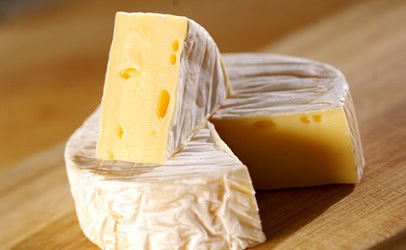
This question is equally as challenging as the previous one. Tying it back into how the process of pasteurization kills all bacteria, good and bad, a lot of friendly cultures essential for tasty cheese are destroyed and therefore they have to be reintroduced back into the milk after pasteurization. However, this still doesn’t help because the microflora is damaged and not passed onto the cheese no matter what. This poses a potential drawback in using pasteurized milk. That being said, it’s not justifiable to just say that unpasteurized milk is better, it is indeed a big factor for great cheese which has the potential to make better cheese. Then again, there are many amazing pasteurized milk kinds of cheese because of the skill of the cheesemaker.
In conclusion, cheeses which are made with unpasteurized milk are equally as safe to eat as those made with pasteurized milk and cheese which is made with unpasteurized milk has potential to taste better but that is just one of the factors that go towards the overall quality of cheese.
Get Cheesy This Fourth Of July!
With the 4th of July being a huge milestone in our country’s history, it is a day where families and friends get together and celebrate it at parades, cookouts, parties- you name it! And the biggest things that center these celebrations are food, alcohol, and fireworks (in no particular order!)

Now, focusing on the food aspect which I’m sure we are all most excited for, let’s take a look at one particular dish which is not only patriotic but also a cheesy delight. Here is a delicious cheese dip that you can make ahead of time so you only have to warm it up before the festivities.
The best cheese found for this delicious dip has got to be our White Cheddar at Shisler’s Cheese House. With its sharp flavor, it really pairs well with the sweet Vidalia onions which are also used in this recipe.
This cheese is so high quality and has such a creamy texture and flavor that it makes it perfect for this recipe as it focuses mainly around the cheese. Not only that but it is a great melting cheese, as discussed in some of our other articles, the type of cheese you melt is important, as not all melt the same or at all. You might know already about how good white cheddar is for melting with it being the season for grilling!
To impress even more at your event, you can keep it festive by making your own tortilla chips to go with the dip. It is very easy, all you have to do is take some flour tortillas and a star cutter and go nuts! You bake for a few minutes on 350 or until they begin to become golden.
Be warned, these are addictive so you might want to make a lot! Enjoy!
Recipe For Cheese Dip

What You Need
1-1/2 cups Cracker Barrel Vermont White Cheddar Cheese, shredded
1/3 cup mayonnaise
3 ounces cream cheese, softened
1/3 cup diced Vidalia onion
1/2 teaspoon pepper
1/4 teaspoon herbs de Provence
1/4 teaspoon creole seasoning
What To Do
1. Mix all ingredients fully and place in a baking dish.
2. Bake for 25-30 minutes at 375 degrees or until golden.
How The Aging Process Works
As they say in the real world, age doesn’t matter. However, in the cheese world, it truly does matter. Aging, otherwise called ripening is one of the most important parts when producing cheese. When we set cheeses to mature in controlled environments, they begin to develop their unique textures, appearances, aromas, and flavors. For example, when Swiss cheese ages, holes begin to form and it firms up.
Timing

The scientific processes of when cheese ages are as followed: the enzymes and microbes develop inside the cheese and breaks down milk fat and proteins into a complex mix of amino and fatty acids. In simpler terms, aging basically transforms the texture of the cheese and intensifies the flavor.
For most cheeses, the aging period usually requires two weeks to two years in order to develop their unique attributes. When cheese ages it generally gets a lot more firm and distinctive in flavor and aroma. When aged for 24+ months, Parmigiano Reggiano becomes a lot more complex, developing a fruity taste alongside a gritty, firm texture. Not every cheese is aged though, mild cheese like cream cheese, cottage cheese and ricotta aren’t aged at all and are consumed when fresh.
Temperature
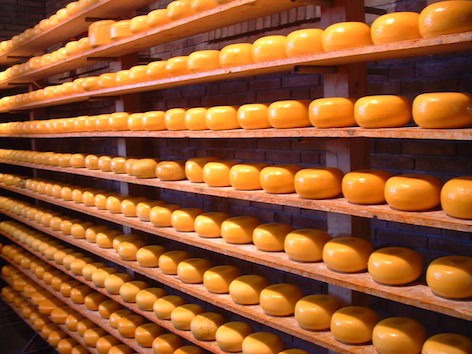
Temperature is very important when it comes to aging. Cheese is stored in cellar or cave type environments which have a closely monitored temperature and humidity. Not all environments are the same though, it all depends on what type of cheese is being made. When it comes to aging, soft cheeses, cooler temperatures are used and the process takes a lot longer because you must age soft cheeses slower to avoid bacteria, in a result of high moisture. If you want to age firm cheeses, high temperatures are used to get rid of excess moisture.
For general aging, the temperatures of the environments that aging takes place in a range between 10 degrees C to 15 degrees C. High moisture conditions are pretty normal, along with at least 80% humidity upwards.
Aging Techniques
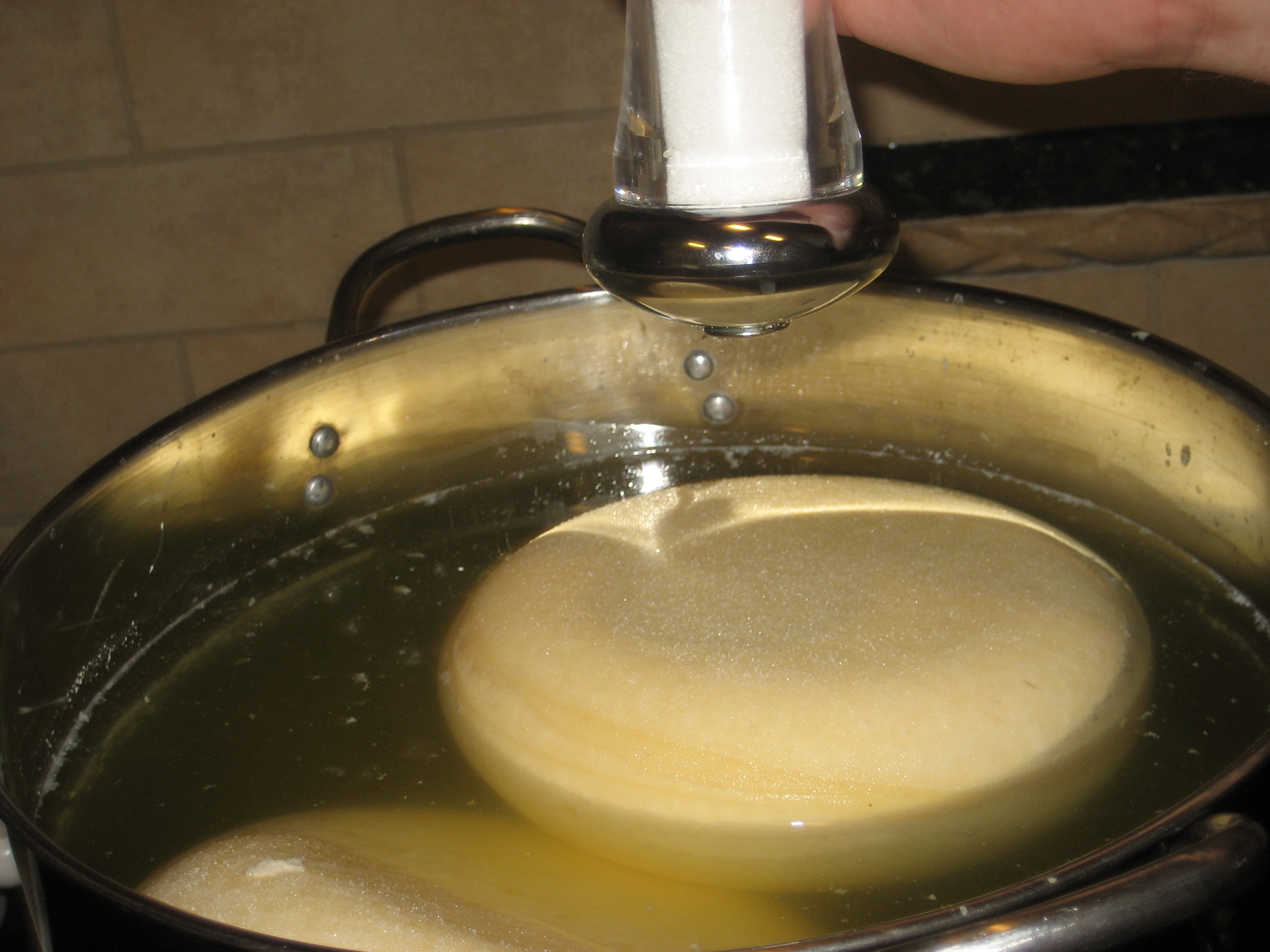
Like many things, there are different ways to age cheese. Lots of different techniques are used to make many of the amazing cheeses we love. There are two main techniques which are called surface ripening and interior ripening.
For surface ripening, the aging begins on the outside of the cheese and progresses towards the inside. To encourage the growth of rind, microorganisms are rubbed onto the outer surface of the cheese. Brie, Munster, Morbier are an example of surface ripened cheeses which are also washed in a saltwater brine during the process. Sometimes, the brine is seasoned with wine and spices which carry flavor into the cheese and nurtures bacterial growth.
When it comes to interior-ripened cheeses, it is opposite to surface ripening and begins from the inside of the cheese and moves outward. The cheese is coated with wax to prevent further oxygen action on the surface, once it is done aging. Examples of an interior- ripened cheeses are Cheddar and Swiss.
For interior-ripened blue cheeses such as Gorgonzola, Stilton, and Roquefort, they contain additional bacteria and molds introduced to them during an aging period. Sometimes, the Penicillium molds are injected into the curd whereas other times, the microbes are already present in the air and grow within the aging cheese. For these molds, they grow into small fissures within the cheese, creating the famous blue-green veins and sharp flavor throughout the cheese.
Have You Tried These Imported Cheeses?
Although importing cheeses is not exactly the greatest thing for the environment, it is great having so many amazing choices. Importing and exporting opens up new worlds, new realities for all of us cheese lovers. Even then, with so much choice, we can sometimes stick to the safe options and what we know; with this, we should definitely experiment and broaden our horizons.
Here are some of the best imported cheese with great variety at the same time:
Italian

Fontina
Although other countries produce their own version of this cheese, Italy’s version is definitely one of a kind, identified by its stamp. This semi-soft cow’s milk cheese has a rind that forms naturally because of the aging process, the interior color is yellow or orange-brown. The texture is different depending on the age. When it is younger, the cheese is a lot more flexible and melts well, so it is ideal for fondues or casserole dishes. When the cheese is matured, it is firmer and grates well.
Caciocavallo
This is a semi-hard cheese which is made from either cow’s or more interestingly- ewes milk. The process which is used when producing this cheese involves spinning the crafted cheese strings into pear shapes that are then cured in brine or salt for a couple days. The string is then tied around the neck to create a separate ball above the main boy of cheese. It is then aged by being hung over poles.
Spanish

Valdeon
This blue cheese is made from goat’s and cow’s milk. It comes from the Picos de Europa mountain range, being mature in limestone caves, traditionally, for at least 2 months. The flavor is tangy and earns its place on a cheeseboard or fits perfect in recipes which need blue cheese.
The Drunken Goat
I know what you’re thinking, what a strange name! However, despite all the things a drunken goat could mean, this is a goat’s milk cheese from the Spanish Mediterranean coast. This cheese has a purple rind and gets the ‘drunken’ from the fact that it is cured in red wine. See, it wasn’t what you thought and is delicious in every way!
French

Boulette d’Avesnes
From the village of Avesnes near the Belgian border, this iconic cheese is shaped into conical parcels. It is a case of the notion that if you don’t mind a very stinky cheese with a strong, spicy taste, then you will enjoy it! It is produced from the damaged whey of curds that is then mashed with spices and herbs. It is then washed every week in beer and matured for around 4 months.
Banon
Like many kinds of cheese, Banon is named after the village of origin. It was first produced in 1270 and is made from cow’s milk with a strong woody flavor to it. The texture is soft with earthy aromas. When being produced, the cheese is molded by hand before the maturing process begins. After the maturing stage, the cheese is then wrapped in dried chestnut leaves to continue maturing for a further 2 weeks.
If this delicious list isn’t enough for you to try, here are a few more options!
– Delft Blue- Holland
– Trappistenkase- Germany
– Tete de Moine- Switzerland
– Bergkase- Austria
Delicious Belgian Cheese
Belgium is not only famous for its rich chocolate but its fabulous cheese as well. Although Belgium is a small country, it makes over 300 different varieties of cheese, almost the same amount as France! The reason Belgium cheeses aren’t as well known as other European countries is that they produce very small amounts of the cheese and very rarely export them out of the country.
You could say that the cheese in Belgium are exclusive and if you are lucky enough to be able to visit Belgium or your local cheese store has a few samples, here is a list of the best cheeses Belgium has to offer:
Herve

The name of this cheese comes directly from the town in which it is made. Herve is one of the most popular cheeses of Belgium, is made from cow’s milk cheese, it comes in the shape of a brick with a reddish brown coating which is formed by bacteria during the aging period. Quite often, Herve is described as similar to Limburger as it has a pale yellow, soft interior and a strong smell to it. The cheese is quite sweet when it is young but as it ages, the flavor deepens, becoming quite spicy. A good pairing would be beers and dark bread.
Beauvoorde
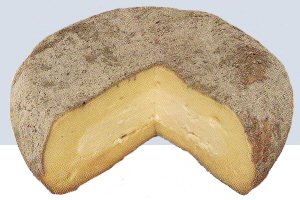
The style of this cheese is quite traditional despite it being newer to the Belgium cheese market. This creamy cheese was made by an innkeeper in from Beauvoorde Village, in the 1990s. It is a semi-hard cheese made from cow’s milk with a hexagonal shape and a natural gray rind around it. The flavors are mild with a spicy aroma. It will make good for a cheese plate or a simple sandwich cheese.
Limburger
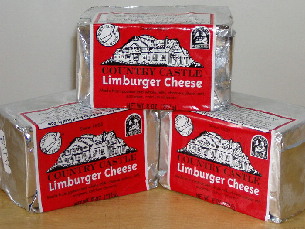
Even though Limburger is readily made and available in the United States, this stinky, legendary cheese actually comes from Belgium originally. This pungent cheese is made from cow’s milk and has a soft, yellow interior. Despite having notes of sweetness, Limburger is quite meaty and spicy. On the outside, the texture is smooth and sticky, ranging in color from reddish-brown to yellow, it also has corrugated ridges. Although Limburger is an acquired taste, it is definitely a must try as the full flavor might definitely win you over.
Brusselse Kaas
This soft cow’s milk cheese is also known as Fromage de Bruxelles. The creation of this cheese is somewhat unique, with it being repeatedly washed and dried during the maturation period of 3 months. In result of this, it has a very smooth texture with a sharp flavor. The shape is often round because of the tubs the cheese is placed in. It can be a great snacking cheese or good for spreading on bread.
Rubens

There is no better way to honor a famous artist than to name a delicious cheese after them. That artist is the Flemish painter Peter Paul Rubens, the most popular painter in 17th century Europe. The cheese is made into small rounds with a reddish brown rind encasing it.
Passendale
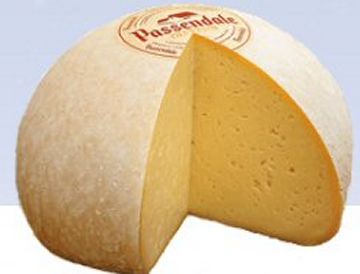
The name of this cheese comes from the village of Passchendaele. It is a semi-soft cow’s milk cheese which resembles a load of bread with a hard, edible brown rind. One of Belgium’s best-known cheeses, the texture is smooth and fresh with dotted holes in the interior with a mild flavor.
Maredsous

This soft cow’s milk cheese is traditionally made by monks, originating from the Maredsous Abbey in Belgium. Being served as a table cheese frequently, the loaf shaped cheese has a bright orange color which is washed with brine and lightly pressed.
Prince-Jean

Prince-Jean is a fresh cow’s milk cheese which is made in modern creameries. This rich, triple cream cheese is divine in all its velvety pleasure. The aroma is pungent with a white mold surface. Another version of the cheese is also made with peppercorns, it is much softer.
Cheese And Tequila- A Match Made In Heaven?
Definitely not what you expected, right? You’re most likely thinking that only wine or beer are good to pair with cheese, but that is not true. Although there isn’t a big history of cheese and tequila being paired together, delicious notes of your favorite tequilas, from caramel sweet to floral, actually do make a perfect pairing to some of your favorite cheese.
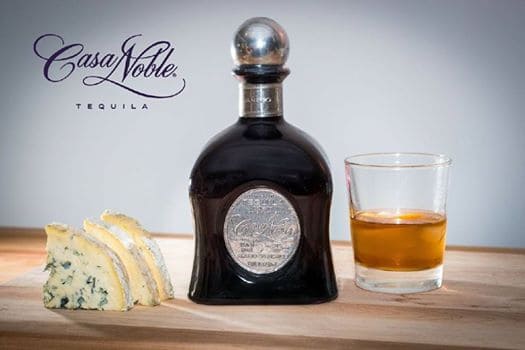
Casa Noble Single Barrel Extra Anejo- Stichelton
For 7 generations French White Oak barrels have been used to create and age tequila and there is no difference here with this tequila. The most evident notes are chocolate, hazelnut, and vanilla. Those mouthwatering flavors make it a wonderful match for a rich cheese like Stichelton which is strong with smooth cocoa notes.
Casa Noble Reposado- Bianco Sardo
Reposado is a full bodied, smooth tequila after being aged in a French White Oak barrel for a whole year. The impact of the oak results in a smokey flavor with hints of wildflowers and vanilla. Bianco Sardo is a much tangier, sweeter version of Parmigiano Reggiano and is an ideal match to Reposado, with sweet aroma and vanilla tastes, it will enjoy the oakiness of the tequila.
Casa Noble Crystal- Camembert
If you love a crisp, clean array of agave flavors, Crystal is the perfect Blanco tequila. Within, there are buttery notes of honey, lime, and citrus. This tequila is well balanced and matches Camembert’s toasty, lactic notes. The cheese even balances out the sweet honey notes and pairs well with the citrus kick of the tequila.
Casa Noble Anejo- Annelies
This tequila is aged in the French White Oak barrels for over two years and a result of this is the Anejo develops a complex mixture of piquant spices and dried fruits. The flavors of this tequila such as the oakiness, vanilla, and butterscotch are what leaves a lasting taste in your mouth, which makes it ideal to go with the tasty Annelies cheese. The cheese boasts a mix of butterscotch and toastiness, with a unique cocoa flavor that stands out against the complex tequila.
Now you see all these wonderful combinations, it will be great to try them, especially in this hot summer heat! There’s nothing like a nice glass of tequila with a mouthwatering slice of cheese, that is for sure! As always, experimentation is key!
Melting Cheese- How Does It Work?
Everyone loves hot, gooey, cheesy heaven- be it America’s favorite grilled cheese, the melty delight which is fondue or even just that sprinkle of cheese you melt over your favorite casserole. Along the way, you may have tried different cheeses and enjoyed their different textures and delicious flavors, but you also may have noticed that some of those delightful cheeses don’t turn smooth and melty like others. Now just because they don’t melt very well, doesn’t mean we love them any less, they are just better for other uses. You might have wondered why your cheese doesn’t melt very well and what to look for in cheese to know whether it melts or not so here is some information to help you along the way.
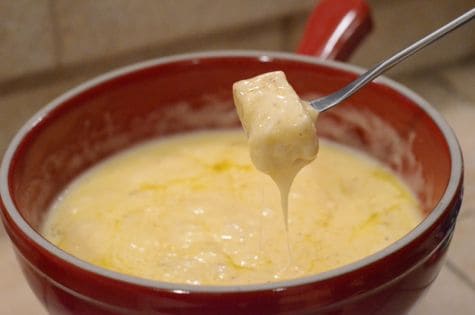
The most important thing you need to know when it comes to melting cheese is that melting is all to do with the fat. The ratio between the water and the fat in the cheese is really what determines how well the cheese is going to melt. So with that, a cheese which is higher in moisture is usually a lot better to melt than a drier one. The reason for this is because of the structure of the protein. The protein keeps the fat and water separated and it is looser in high moisture cheeses as opposed to dry ones which are a lot more rigid.

So, with this knowledge, when heat is applied to most cheeses, the fat globules go from solid to liquid which is when the cheese starts becoming that yummy, gooey consistency. When it comes to the protein, the structure loosens under the heat and again, the consistency becomes very loose and thick. It really depends on the cheese how the liquid goes, it could be very sticky or be very liquidy and drip like fondue.
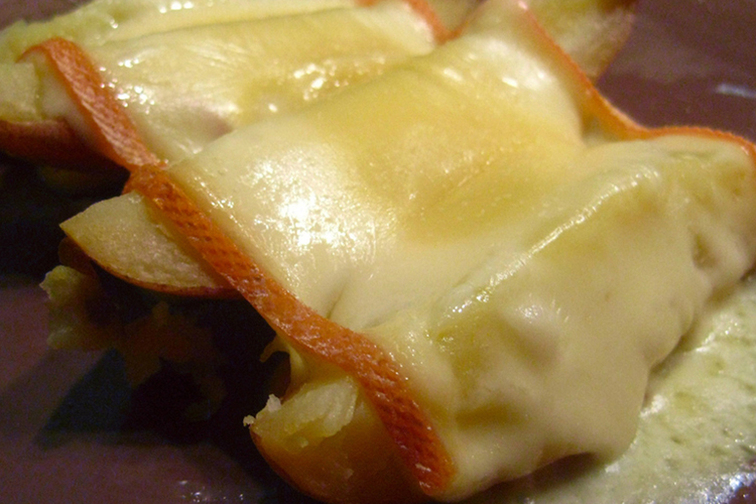
This is also why age is important when it comes to cheese. For fresh cheese, they don’t have a maturity level which makes their proteins very tightly wound up. When they age a little, the proteins begin to loosen up, creating a more open matrix. This matrix is flexible which helps with melting the cheese to smooth consistency without the matrix breaking. However, problems do arise when the cheese ages too much, it makes the proteins tighten up into clumps, which is why crispy cheese happens.
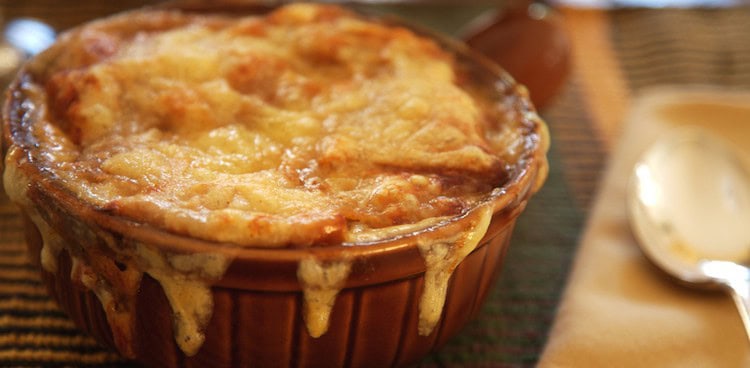
So, the best melters are a combination of moisture and age. Examples of cheeses with the desired qualities are Gruyere, Emmentaler, and Comte, these cheeses have flexible proteins and are aged well. The fact that they have high moisture helps the proteins separate without breaking them entirely, meaning they become the stringy, oozing melted cheese we love so dearly. I bet it makes your mouth water just thinking about it.
Dictionary Of Cheese
When it comes to forming your cheese plate, it is always advised to have a lot of variety. In terms of variety, it can mean many things- different flavors, textures and different milk types. In many circumstances, opposites attract, especially in cheese. Opposite flavors often complement each other. The best way to form your plate is just to experiment with different cheeses, you cannot go wrong.
You may be struggling to find inspiration for what cheeses to try for your plate so here is a dictionary list of some delicious cheeses to guide you along your way and ignite your senses like never before.







